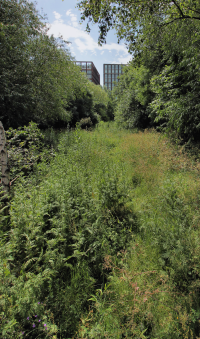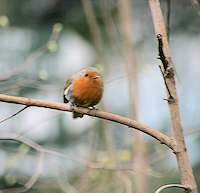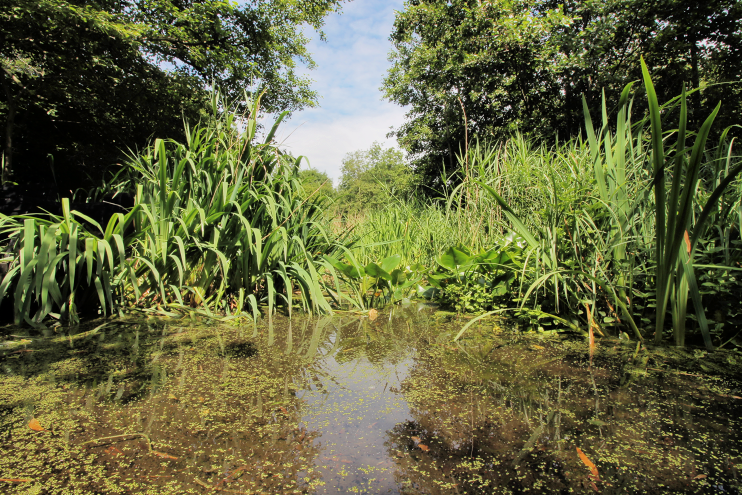Camley Street natural park
A walk on the wild side of Camden
Camley Street Natural Park, King’s Cross, N1

During the 1970s a disused coal yard north of St Pancras station evolved into a haven for wildlife – as well as favoured spot for fly tippers. This urban wilderness was scheduled to become a coach and lorry park until it was saved by the Greater London Council, following a campaign by local residents and the London Wildlife Trust. Aided by funding from several authorities and agencies, the GLC bought the site in 1981 for £600,000, a relatively low price because in those days this was “the derelict back end of an area with a vicious reputation.”*
A further £120,000 was spent on clearance, ecological landscaping and the construction of a visitor centre. That work would have cost considerably more had it not been for the assistance of many volunteers. Camley Street Natural Park opened in 1984. Two years later it became the first artificially created park to gain statutory designation as a local nature reserve, and soon after that survived the threat of redevelopment.
Squeezed between Camley Street and the Regent’s Canal, the park’s two elongated acres are a fraction of the size of the average London park, but there’s a lot going on in the undergrowth and under the water. The central feature is a pond fed by the canal and surrounded by reedbeds and marshland. There’s a small wildflower meadow and plenty of trees screening the park from the road, primarily birch and willow.

The park’s most visible inhabitants are amphibians and aquatic birds like mallards and coots. You may also spot reed warblers, kingfishers and reed buntings. I saw a robin too. There’s a plethora of plant life, including meadow flowers and marshland herbs, and tubs of fruit trees because of the park’s participation in the Orchard Project.
Kids are encouraged to do some pond-dipping, which means kneeling or lying down on a dedicated platform and using a tray or bowl to scoop up some water for close examination.
Right from the start there’s been an emphasis on education here, so there’s plenty of informative signage throughout the park.
“There is a delight in the wonder of children as a dragonfly alights on the leaf of a water plant or a tiny tadpole swims beneath the surface. The cry of a young Londoner as he peered into the water that ‘blimey, there’s something livin’ down there’ will always ring in my ears.”
Michael Hough, Cities & Natural Process: A Basis for Sustainability, Routledge, 2004
Camley Street Natural Park was recently closed to the public for a couple of years, while a new visitor and learning centre was built with the help of a million pound grant from the Heritage Lottery Fund. During the construction period the ponds were desilted, the wildflower meadow and the wetland and reedbed areas were enhanced and access to the nature reserve was improved. The park reopened in October 2021 and you can visit it daily from 10am.


